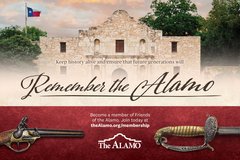This rim sherd fragment was recovered inside the Long Barrack during the recent excavations. The colors exhibited on the sherd as well as the banded rim indicate that this is a fragment of San Elizario Polychrome majolica. A majolica is a type of ceramic that exhibits a tin enamel glaze.
San Elizario Polychrome is distinctive by its blue decorations with a brown or black outline. On this sherd, there is a blue rim band with a brownish band outline. Below the rim band, there is typically blue floral designs. The central portion of San Elizario vessels often depict a crane-like bird.This type was likely manufactured in Puebla, Mexico and would have made its way to San Antonio during the Spanish Colonial Period.
Although the ware was likely produced between 1750 and 1850, it appears to have been popular in Texas between 1755 and 1780. San Elizario Polychrome has been identified at the San Antonio Missions, Presidio La Bahia (Goliad), Mission Espiritu Santo (Goliad), Mission Nuestra Señora del Rosario (Goliad), San Saba, Rancho de Las Cabras (Floresville), and other sites in Texas with a Spanish Colonial component. It has also been identified at Florida and California Spanish Colonial sites.



